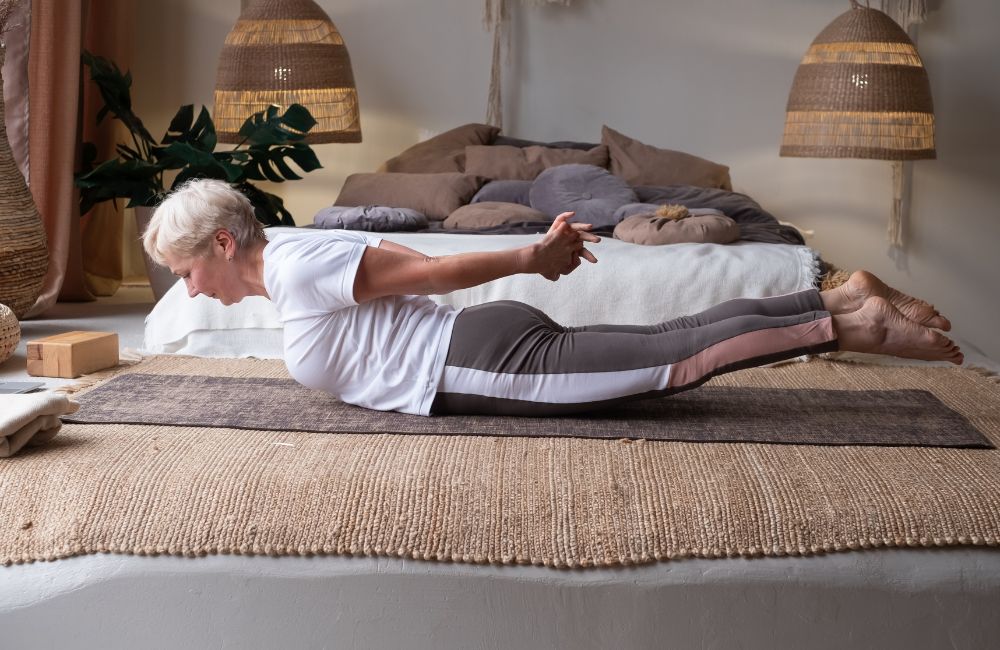
As we get older, it becomes more important to stay active for our physical and mental well-being.
However, high-impact exercises like running or jumping can strain our joints and muscles, especially if you’re over 60.
The good news is that there are plenty of low-impact floor exercises that are safe for individuals in their 60s and beyond.
These exercises help build strength and flexibility while improving balance and coordination. They can also alleviate age-related issues such as arthritis and osteoporosis.
In this article, we will explore the best low-impact floor exercises for individuals over 60. We’ll cover modified versions of traditional exercises, gentle stretches, and yoga poses.
If you want to stay active and maintain your independence, keep reading to discover how these exercises can make you feel stronger, more flexible, and more confident in your body.
You’ll also like:
Do These Low-Impact Exercises to Build Total Body Strength
The Best Exercises You Should Be Doing To Regain Balance After 50, Trainer Says
The 5 Best Exercises You Could Ever Do to Bulletproof Your Body After 65, Says a PT
Benefits of low-impact floor exercises for seniors
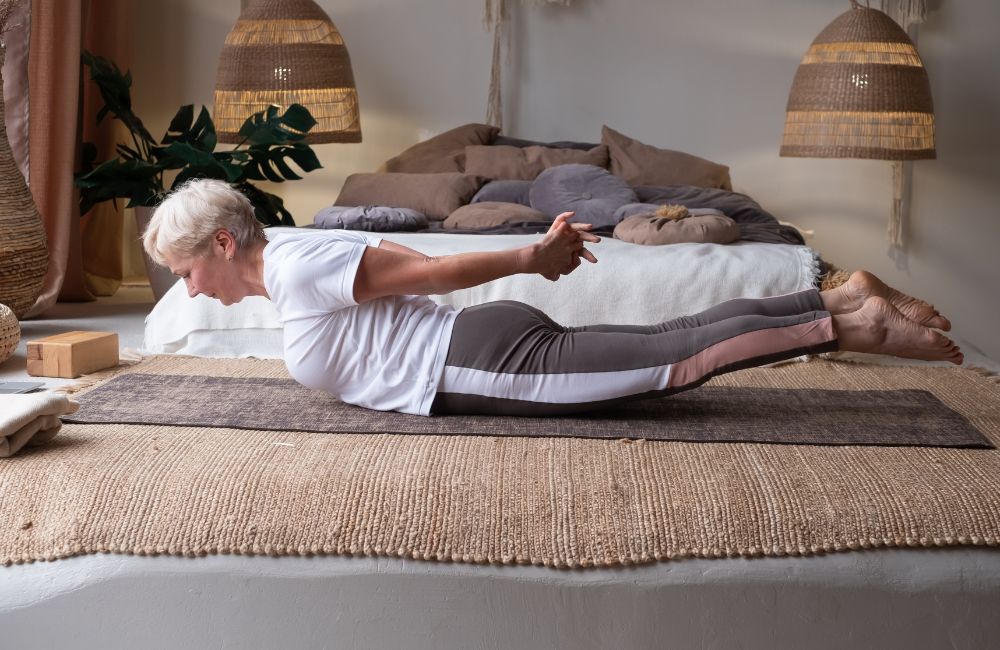
Low-impact floor exercises offer numerous benefits for seniors. Firstly, they reduce the risk of injury or discomfort that high-impact exercises may cause.
By opting for low-impact options, seniors can engage in physical activity without straining their joints and muscles.
These exercises are especially crucial for individuals with joint pain or arthritis, as they provide a safe way to improve fitness and mobility.
Secondly, low-impact floor exercises enhance balance and coordination, helping to prevent falls.
This is of great importance for seniors, as falls can result in severe injuries that limit their independence.
Regular exercise can improve balance, ultimately reducing the risk of falls and promoting overall well-being.
Precautions Before Starting Exercises:
- Consult your doctor before beginning any exercise program, especially if you have health conditions or concerns.
- Start slowly and gradually increase intensity and duration to prevent overexertion and potential pain or discomfort.
Warm-up exercises:
- Marching in place: Lift knees comfortably while standing with feet hip-width apart, swinging arms back and forth.
- Arm circles: Stand with feet hip-width apart, circle arms forward and backward, gradually increasing circle size.
- Shoulder shrugs: Stand with feet hip-width apart, shrug shoulders towards ears, and release.
Strengthening exercises
Back Extension: Salabhasana (Locust)
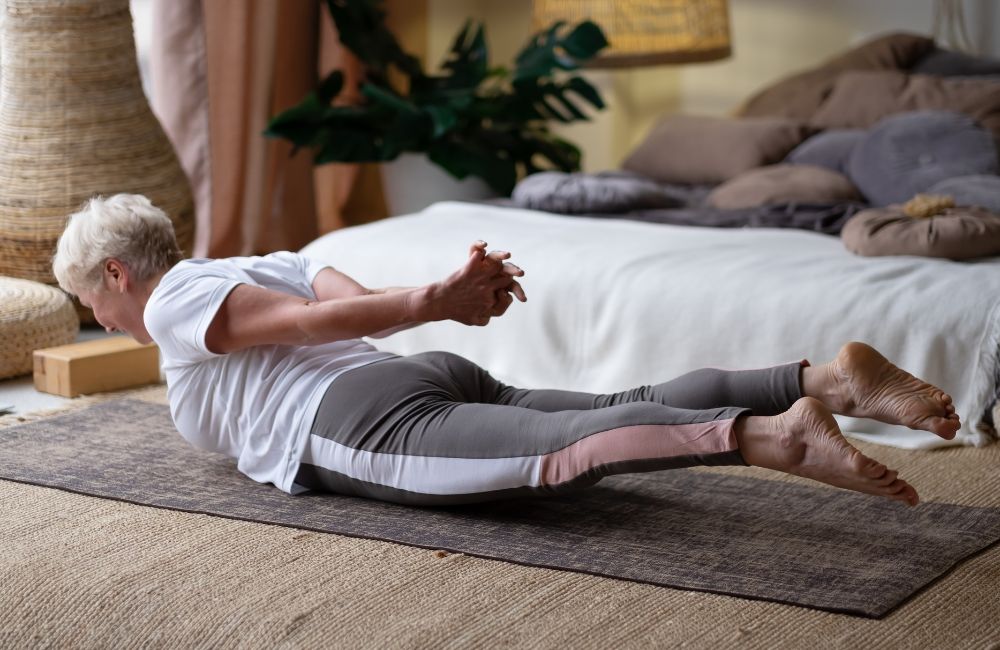
- Lie face down on a mat or flat surface with your legs extended and your arms by your sides.
- Place your forehead on the mat or keep your gaze slightly forward.
- Engage your core and glutes to stabilize your body.
- Keep your legs extended and together.
- Inhale and lift your chest, head, arms, and legs off the mat simultaneously.
- Reach your arms backward and lift your legs as high as comfortable.
- Maintain a lengthened neck and gaze forward or slightly upward.
- Keep your shoulder blades down and away from your ears.
- Hold the lifted position for a few breaths, feeling the engagement in your back muscles.
- Exhale and slowly lower your chest, head, arms, and legs back down to the mat.
- Repeat for the desired number of repetitions, focusing on maintaining proper form and controlled movements.
Glute Bridge
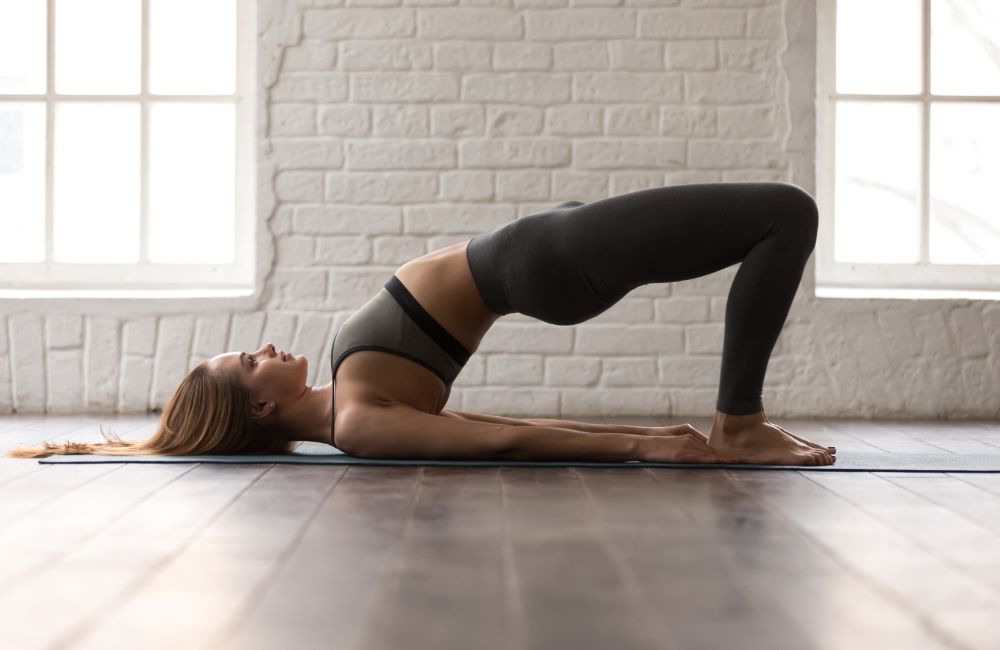
- Lie on your back with your knees bent and feet flat on the floor, hip-width apart.
- Engage your core and squeeze your glutes to lift your hips off the floor, forming a straight line from your knees to your shoulders.
- Hold for a few seconds at the top, focusing on contracting your glutes.
- Slowly lower your hips back to the starting position.
- Repeat for a desired number of repetitions. Glute bridges primarily target the glutes and hamstrings.
Side Plank
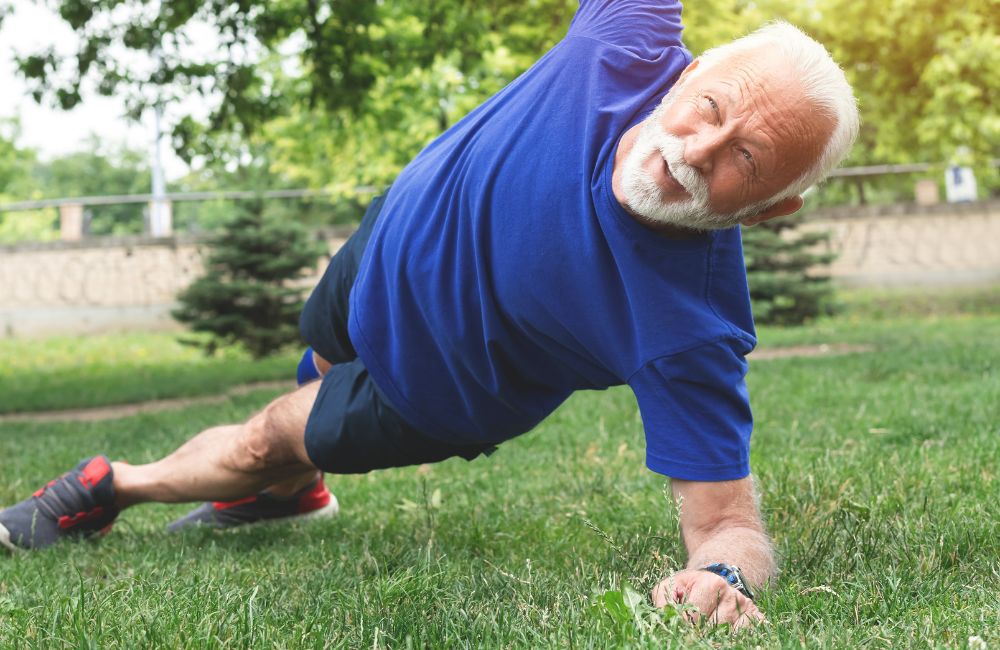
- To do a side plank, start by lying on your side with your body in a straight line from your head to your heels. Your feet should be stacked on top of each other and your forearm should be directly under your shoulder.
- Your body should be in a straight line from your head to your heels.
- Engage your core and lift your body up off the ground so that you are supported by your forearm and your feet. Hold this position for as long as you can.
- As you get stronger, you can try to hold the plank for longer periods of time or add variations to the exercise.
Flexibility exercises
Seated hamstring stretch:
This exercise promotes flexibility in the hamstrings, improving lower body mobility.
- Sit on the floor with legs straight out in front of you.
- Reach forward and try to touch your toes.
- Hold for a few seconds.
Seated spinal twist:
This exercise enhances spinal mobility and stretches the back and core muscles.
- Sit on the floor with legs straight out in front of you.
- Cross one leg over the other and twist your torso towards the crossed leg.
- Hold for a few seconds, then repeat on the other side.
Knee-to-chest stretch:
This exercise stretches the glutes and lower back, promoting flexibility and relieving tension in those areas.
- Lie on your back with your knees bent and feet flat on the floor.
- Bring one knee up towards your chest, holding onto it with both hands.
- Hold for a few seconds, then repeat on the other side.
Cool-down exercises:
Seated forward fold:
Sit on the floor with legs straight out, reach forward to touch toes, and hold for a few seconds.
Child’s pose:
Kneel on the floor with legs together, lower torso towards the floor, stretching arms out in front of you.
Cat-cow stretch:
Get on hands and knees, with hands shoulder-width apart and knees hip-width apart. Arch back towards the ceiling, then lowers it towards the floor.
Tips for safe and effective floor exercises:
- Start slowly and gradually increase the intensity and duration of workouts.
- Listen to your body and stop if you feel pain or discomfort.
- Focus on proper form and technique to prevent injury.
- Wear comfortable, supportive shoes and clothing.
- Stay hydrated and take breaks as needed.
Modifications for different fitness levels:
- Start with fewer repetitions and gradually increase as strength improves.
- Use a chair or wall for support if needed.
- Emphasize proper form and technique over speed or intensity.
- Use lighter weights or resistance bands if necessary.
Conclusion:
Low-impact floor exercises are a safe and effective way for seniors to build strength and flexibility.
By incorporating these exercises into your routine, you can enhance your overall health, reduce the risk of chronic diseases and injuries, and feel stronger and more confident in your body.
Remember to consult your doctor before starting any exercise program, start slowly, and gradually progress. With dedication and patience, you can enjoy the benefits of a more active and independent lifestyle.


